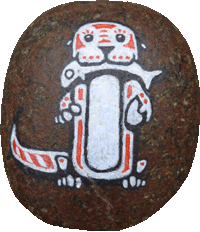Madagascar is over. Two weeks is definitely not enough time to explore this nation, not even to explore the best wildlife sites. I’ve seen just enough of the people and places of the island in passing that I’d like to come back for more than just lemurs, though. There is so much here that is different from everywhere else. Madagascar raises lots of questions. Questions like… if it’s a French colony, and the first language is Malagasy and the second is French, then why is the nation’s favourite home-produced beer called “Three Horses Beer” (THB)?
Here are a handful of other thoughts I’ve jotted down in the last two weeks.
From our hotel the sound of the Indri singing in the forest is a haunting lament, very beautiful. But when you are in the forest watching them only about ten yards away and they suddenly start singing it is an ear-splitting sound, a howling alarm call warning of the destruction of all the natural habitats on this unique island. Everyone should come and hear it. One hundred years ago almost 90% of Madagascar was forested, now it is 10% and shrinking. I’ve watched documentations that say it’s palm nut oil plantations and other baleful western influences to blame, but from what I’ve actually seen it looks like it’s just indigenous agriculture. And you can’t blame a growing population from wanting to feed themselves and prosper, so what can you do? (PS. Indri singing at the bottom of this post).
If you are thinking of visiting Madagascar and envisaging ancient temples and grand edifices in the jungle, think again. Amazingly it seems that humans only arrived in Madagascar about 2,000 years ago, from Indonesia via Africa. That’s astounding. For over 100,000 years humans have been living across the furthest reaches of the globe, from tiny Easter Island through every corner of six continents to freezing northern Canada and everywhere in between.
Yet there was an island more than twice the size of Britain that remained completely uninfluenced by human activity until about the time the Romans were building a road network across the whole of Europe. So, no ancient temples. Even the colonial French didn’t leave much in the way of architecture. The small villages in the hilly landscape look like they’ve been there forever, though.
India poisons you as a tourist. To be more precise (and hopefully avoid offending!), the Rajasthan tourist circuit poisons you. Since our arrival in Madagascar we have been offered all kinds of things by people, from peanuts to hand-carved trucks. And of course we’ve given them the reaction we learned while touring Rajasthan: a curt shake of the head, a quick “no thanks” and turn away without making eye contact. You master that approach in India, or you get pestered every bloody step by people who won’t take no for an answer. It has slowly dawned on us here in Madagascar that people are not like that, they’re friendly and of course they’re trying to make a living but you can make eye contact, say hello, and then say “no thank you” – they’ll move on. So there’s a whole bunch of people we could have had brief friendly encounters with that we have instead cold-shouldered. Thanks to Agra-aggravation.
Maureen says: If the indri in the video doesn’t look like their lip is moving, that might be because I was filming the wrong one. But the sound is authentic!
Related Images:













































